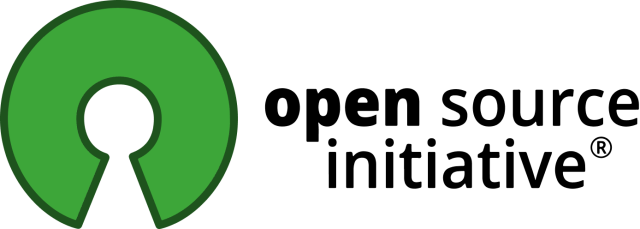Hi! I’m Sai Krishna (Director of Engineering, LambdaTest), an open-source contributor and maintainer with over a decade of experience. My journey began as an OSS user, overcoming the difficulties associated with mobile test automation. Witnessing firsthand how open-source tools empower the community sparked a deep interest in giving back. That’s where my journey truly started. Since then, I’ve contributed to and maintained key projects like Appium, co-created tools like AppiumTestDistribution (ATD), and actively mentored the next generation of testers. For me, open source isn’t just about code. It’s about creating impact through community collaboration.
1. How did you get involved with Open Source?
Like many others, I started as an open-source user. As I relied on tools like Appium in my day-to-day testing efforts, I realized how these community-built tools made life easier for so many. That realization inspired me to contribute back. I began small, triaging issues and writing documentation, and gradually moved toward contributing code. Over time, I got involved in projects like Appium, Selenium, and ATD, eventually taking on maintainer roles to help shape the direction of the tools I once just used.
2. What’s Open Source to you?
Open source is a shared responsibility and a powerful force for innovation. It’s not just about software. It’s about enabling communities to solve problems together. Whether it’s writing code, reviewing pull requests, improving documentation, or guiding a first-time contributor, open source thrives when we build with the community, not just for it.
3. What projects are you involved in?
-
Appium Java Client: Focused on plugin architecture and improving parallel test support.
-
AppiumTestDistribution (ATD): Co-created to address parallel execution challenges in mobile and IoT testing.
-
Selenium / Taiko: Contributed to enhancing developer ergonomics and cross-browser testing stability.
-
Appium Plugins: Developed several plugins to simplify and extend Appium capabilities:
• Appium Device Farm
• Appium Gestures Plugin
• Appium Wait Plugin -
Appium Conference: Active participant and advocate for sharing best practices and building global tester communities.
4. How do you grow your community?
-
Listen and Adapt: ATD was shaped by community feedback, such as adding remote device execution support for distributed teams.
-
Simplify Onboarding: Built tools like
appium-installerto make setup easy for newcomers. -
Accelerate Go to Market: Appium Device Farm enables organizations to quickly set up scalable mobile device grids for automated testing. This helps improve device coverage, accelerate feedback, and reduce time to market.
-
Events and Outreach: Conduct webinars, workshops, and community calls to connect with testers and developers.
-
Documentation First: Clear and actionable guides are a top priority to help contributors ramp up quickly.
5. Main Challenges as a Maintainer
-
Burnout and Sustainability: Balancing a full-time job with OSS commitments requires careful management.
-
Technical Debt: Evolving architectures while keeping backward compatibility is complex.
-
Security Oversight: Staying ahead of vulnerabilities in dependencies is a continuous effort.
-
Succession Planning: Building a pipeline of contributors who can take over when needed is essential for long-term project health.
6. How Contributors Can Support Maintainers
-
Non-Code Help: Contribute to documentation, triage issues, or mentor first-time contributors.
-
Sponsorships: Encourage organizations to support OSS via GitHub Sponsors or Open Collective.
-
Be Proactive: Submit detailed bug reports and well-crafted pull requests, and respect maintainers’ time.
-
Security Mindset: Assist with implementing reproducible builds, static analysis tools, and secure development pipelines.
7. Key Security Practices
-
Automated Scanning: Integrated static analysis and dependency scanning into CI/CD workflows.
-
Manual Reviews: Maintained strong code review practices to catch subtle vulnerabilities.
-
Reproducible Builds: Adopted to ensure traceability and auditability across key projects.
-
Community Awareness: Hosted regular sessions on secure coding and testing for mobile and web ecosystems.
8. Impact of AI on Open Source
-
Faster Innovation: AI tools like code assistants and CI copilots boost productivity and accessibility in open source.
-
New Risks: AI-generated code introduces concerns around licensing, bias, and reproducibility.
-
Upskilling: Developers with AI and open source experience are in high demand. AI knowledge is becoming essential for modern maintainers.
9. Advice for Maintainers
-
Mentor Early: Invest time in contributors who can grow into future maintainers.
-
Use Metrics: Track pull request volume, response time, and contributor engagement to identify gaps.
-
Automate Everything: Leverage bots, scripts, and CI tools to reduce fatigue and focus on strategic efforts.
-
Be Community-Driven: Focus on solving real pain points. ATD succeeded by addressing everyday mobile testing challenges.
Final Thoughts
Open source is built on invisible work: code reviews, mentorship, documentation, and triage. That work deserves recognition and support. As the landscape evolves and AI plays a bigger role, maintainers must innovate while staying sustainable and inclusive. The future of open source depends on shared responsibility and visible maintainership.
Connect with Sai Krishna:
GitHub: saikrishna321
Blog: saikrishna.tech
LinkedIn: Sai Krishna
